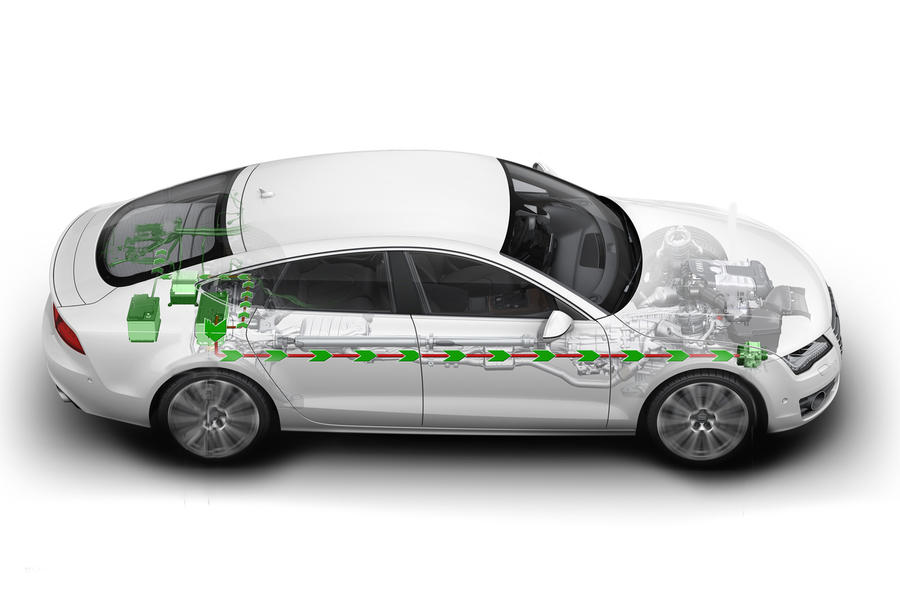Audi is working on a new form of ‘coasting hybrid’ that uses a high-power starter motor to enable the car’s engine to be turned on and off frequently during a journey.
Stop-start is now a familiar fitment in modern cars but with the iHEV, Audi is proposing to take this further by switching off the engine during a car’s journey, exploiting momentum and gravity to keep a car moving forward without using fuel.
The Intelligent Hybrid Vehicle concept is based on an Audi A7 and uses an unusual 48V electrical system, powered by a 48V lithium-ion battery stored in the boot, to drive a electric belt-drive starter motor. This spins an idled engine quickly and seamlessly back into life.
The iHEV is intended to work in combination with Audi’s Predictive Efficiency Assistant. A ‘pre-development’ project, PEA will use information from the navigation system - including road gradient data and local speed limits - and information from road signs so that it can predict what is around the next corner and make driving suggestions to the driver that will reduce fuel consumption.
For example, the PEA can calculate, using information about the car’s speed, rolling resistance and the road gradient, the point when the driver should step off the accelerator, allowing the engine to stop and the car coast up to an approaching speed restriction, so it arrives at exactly the right speed.
Information about the car’s drag and rolling resistance - even when equipped with, for example, a roof box or when towing a trailer - has already been calculated in the Audi wind tunnel and are embedded in the car’s control software.
PEA could also be used in conjunction with Active Cruise Control, so the car substantially controls itself on the motorway, with the engine being turned on and off and the brakes being activated by the iHEV control system. Audi engineering sources also told Autocar that, at motorway speeds on the level, the iHEV could coast for over a kilometre with the engine idled.
Officially, Audi says that in tests with a iHEV Audi A7 prototype on 38 miles of ‘winding country lanes’ the engine was off 28 percent of the time with just the engine idling and coasting function enabled and a remarkable 43 percent of the time with PEA activated. Audi says fuel consumption was reduced by 10 per cent and the journey time was increased by just two minutes, or three per cent.
A brief drive in the A7 prototype shows it to be very quick to slip into coasting mode and impressively seamless in re-starting - a function of the powerful belt-drive starter and the ability for the engine’s internal components to be stopped in the ideal configuration for quick and smooth re-starting. Indeed, after a few minutes behind the wheel, it felt natural to stop monitoring whether the engine was on or off. The frequency of the engine cutting out also showed just how much energy is stored in momentum and how effective it is to exploit this situation.





Join the debate
Add your comment
Coasting
I can see the point of switching the engine off if it's petrol, providing you have an electric pump for the steering rack ( a pure electric rack is a no-no) but for a diesel you need to keep the engine running in order to get it up to proper temperature. I reckon if I had a diesel car, I would have to drive to work and home again several times before stopping the engine, in order to get it hot enough for the DPF to work properly.